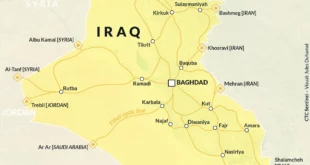TEHRAN (FNA)- Iran is planning to pump in excess of $120 bln into projects to produce 80 million tons of liquefied natural gas (LNG) within 12 years and become the world’s largest LNG exporter, an Iranian gas official said Wednesday.
Ali Kheirandish, Managing Director of the government-controlled Iran LNG Company, said his country had already secured nearly $5bln in bank finance and would not have any problem getting more funds.
In an interview with Emirates Business, Kheirandish said his company would pump more than half the country’s targeted output and it has already secured enough markets in Asia and Europe for its products.
“Our forecast is to produce 80mln tons of LNG by 2020. We could increase the level after that period but it will depend on the market and other conditions,” he said at a Middle East project finance conference in Abu Dhabi.
“Of course, these projects will attract huge investments. Our estimates are that their costs in current prices are in excess of $120bln. I am talking about current estimates as the costs might go up at a later stage.”
Iran currently does not have LNG industries although it controls the world’s second largest natural gas resources after Russia, estimated at 27.5 trln cubic meters, more than 15 per cent of the total global gas reserves.
The delay in setting up such industries is mainly due to the country’s focus on upstream oil and gas development to meet domestic demand.
“I can assure you that we do not have any problem or difficulty in fixing finance for our projects because of the very good return and advantages from these projects. Many financers have come to us with very attractive offers and we expect lot more banks to make offers,” Kheirandish said.
“Some people think that because of our political situation, we will not be able to find financing but we could. I can reveal to you that for now our company has already secured more than $5bln for its LNG projects. These have come from three sources – our own resources, partners and banks.
“We are still receiving proposals from many banks. Many of them are in Asia and one in Europe. As for the Persian Gulf banks, we have not approached them yet. We have devised a comprehensive financing plan to secure our funding needs. If one financer does not come on time, we can arrange funds from another financer. I can tell very frankly that we have no problem finding finance.”
Kheirandish said Iran LNG, which is 51 per cent owned by the National Iranian Oil Company’s Staff Pension Fund, had already embarked on a major LNG project at Asitenear Tombak, nearly 60km from Assaluyeh in Bushehr province.
He said the project comprises two liquefaction trains with an output capacity of 5.4 mln tons of LNG per year, 450,000 tons of butane and propane, 210,000 tons of light condensate and 133,000 tons of sulphur.
Nearly 70 per cent of the LNG production would be sold in Asia and Europe under long-term supply contracts, while the rest would be sold on the spot market. Condensates and sulphur will be marketed mainly in India and the Far East.
“Regarding markets, we have already secured many markets and will secure more in time. Our focus is on Asia and Europe. I know there are political problems with some European countries but it is their mistake. They know they need our gas and we hope that they will come back to us.
“I believe the companies there (Europe) already see that their government behavior is not according to the companies’ behavior and interests.
“These companies know better what they need as they know about future demand and the population growth, which requires more needs,” he said.
Kheirandish said he saw a vast market for LNG worldwide given the rapid growth in global gas consumption, adding Iran is not vying with Qatar, which is already the world’s top LNG exporter with an output of more than 30 mln tons in 2007.
 Eurasia Press & News
Eurasia Press & News


